In this article:
The skin is the largest organ in the body. It is the most comprehensive barrier to external threats and keeps foreign objects out.

The skin consists of multiple protective layers, namely, the top layer called the epidermis, the middle layer called the dermis, and a deep layer called the hypodermis or subcutis. These skin layers house nerve fibers, sweat glands, blood and lymph vessels, and hair follicles. (1)
Common Skin Issues
Acne, wrinkles, and dry or oily skin are the common skin problems about which people complain.
1. Acne
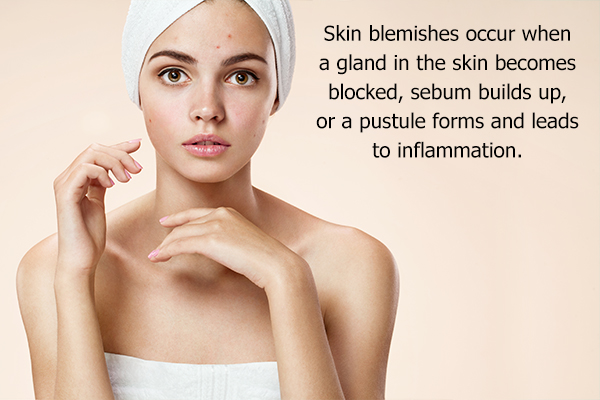
Acne is often the result of blocked sebaceous glands under the skin that lead to the buildup of sebum (an oily substance for moisturizing the skin) inside the pore, which eventually erupts in the form of a pustule on the skin and is marked by inflammation.
Unlike the occasional pimple, acne is typically a chronic condition that lasts for long periods. There are three main categories of acne: mild, moderate, and severe.
Hormonal changes, particularly an increase in androgen levels during puberty, can overstimulate your sebaceous glands to produce excess oil. The oil can mix with dead skin cells and clog pores, leading to blemishes. Thus, pimples can develop in any area of the body with oil glands, such as the back and chest.
Aside from hormones, other factors such as taking medications, stress, and using certain skin care products can worsen breakouts. Acne is also related to the immune system and bacteria. (2)(3)
2. Wrinkles

As you get older, there is a gradual decline in skin cell proliferation as well as in the production of elastin and collagen, which are structural proteins that keep the skin firm and taut.
As a result, the skin is unable to regenerate itself as quickly as before and becomes progressively saggy and thin. The loss of skin elasticity makes it more prone to wrinkles and fine lines. (4)
3. Dry or oily skin
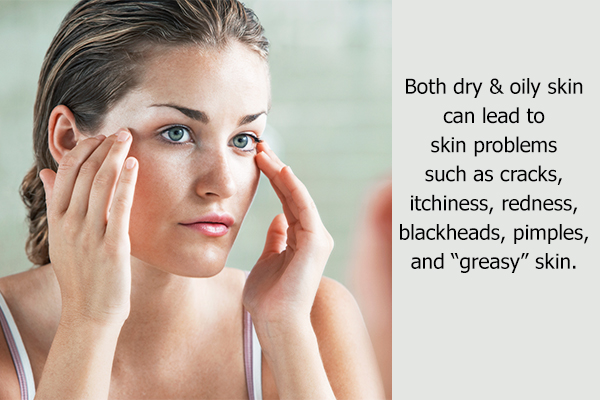
Dry skin occurs when the skin is unable to retain moisture correctly. This can be caused naturally by aging or climates and also by specific medical conditions, harsh skin products, and frequent washing. (5)
By contrast, skin that produces too much oil can cause a consistent “wet” and shiny appearance. Oily skin is a result of the overproduction of oil by the sebaceous glands. While dry skin can be a struggle to deal with, oily skin can be difficult to keep clean.
Hormones and genes play a big role in the way oil glands work. (6) Both dry and oily skin can lead to skin problems, including cracks, itchiness, redness, blackheads, pimples, and “greasy” skin. Interestingly, a lack of hydration can cause oily skin in some individuals.
How Diet Impacts Skin Health
Aside from the factors mentioned previously, your skin problems might also be tied to one other large factor in your life – your diet.
While dietary habits and their relationship with skin health have not had the best clinical luck in the past, there is some evidence showing a connection between what you eat and drink and your skin health.
Foods that reduce acne outbreaks
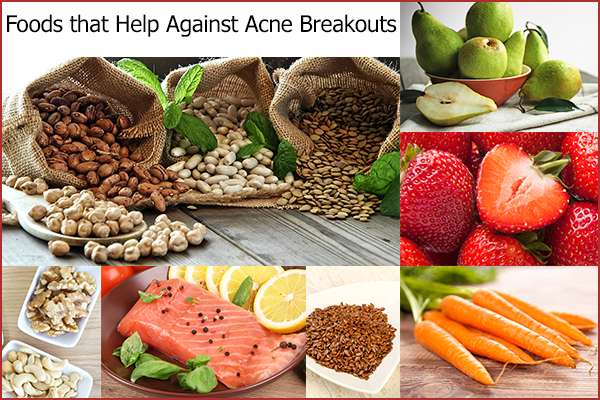
The relationship between acne outbreaks and diet is still unclear, but scientists are slowly uncovering pieces to the puzzle.
A high-glycemic load appears to be related to acne occurrence. (7) High-glycemic foods include white bread, ice cream, candy, potatoes, and soda. Frequently consuming fatty foods, sugar, sausages, burgers, pastries, and cakes are associated with an increased risk of developing acne. (8)
By contrast, some studies found that a diet high in omega-3 fatty acids was related to a reduced number of acne lesions, blackheads, papules, and pustules and had a therapeutic impact on acne vulgaris. (9)
To reduce your odds of developing acne and support your skin during an outbreak, focus on consuming foods with low glycemic loads and high omega-3 fatty acids, including:
- Chickpeas
- Red lentils
- Kidney beans
- Pears
- Strawberries
- Carrots
- Cashews
- Salmon
- Walnuts
- Flaxseeds
Foods that fight wrinkles and aging
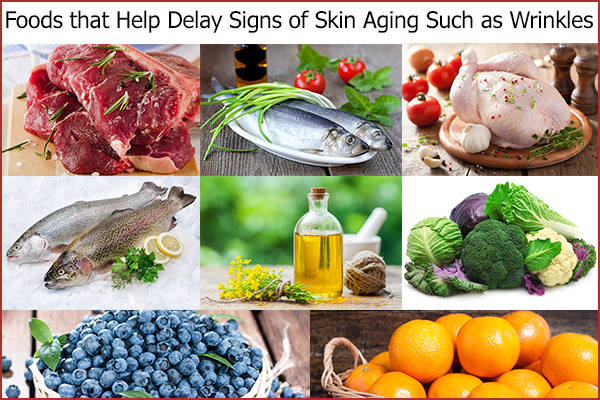
Because wrinkles and fine lines are a natural part of the aging process, there is no magic cure to diminish them forever. However, some research shows that consuming specific nutrients may prevent the appearance of wrinkles and may also help your skin look younger.
Specifically, a study found that the intake of a nutrient called coenzyme Q10 (CoQ10) limited the deterioration of elasticity caused by seasonal changes and reduced the signs of aging. (10)
One small study found reduced wrinkle appearance and improved skin smoothness after supplementing with CoQ10. (10)
For aging in general, many believe that consuming a diet high in antioxidants is one way to fight cell damage. While this theory is still highly debated, eating foods high in antioxidants is always beneficial for your health.
Foods high in CoQ10 and other antioxidants include: (11)
ALSO READ: Anti-Aging Foods: Diet to Delay Aging
Foods that improve dry and oily skin
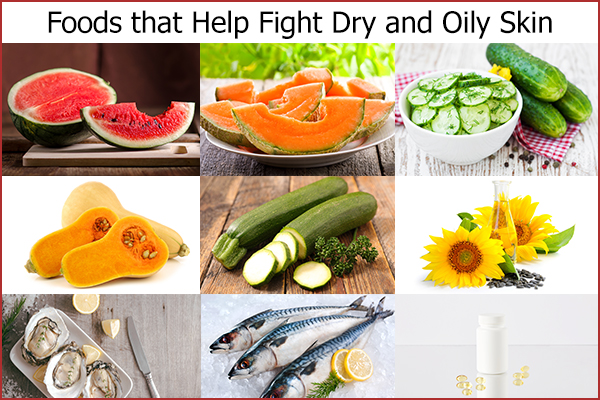
Many find that excessive oil production on the skin can be corrected by proper hydration. For this reason, the treatment for both dry and oily skin can be quite similar.
Proper hydration is a requirement for the proper functioning of all organs, including the skin. (12) The University of Wisconsin points out that while more studies are needed to tie drinking water directly to healthy skin, water is clearly the best place to start.
The fact is that skin is an organ and just like any other part of the body, your skin is made up of cells. And skin cells, like any other cell in the body, are made up of water. Without water, the organs will certainly not function properly or at their best. (13) In addition to staying hydrated with water, fatty acids may also help keep the skin from drying.
One study showed that a deficiency in docosahexaenoic acid (DHA, an omega-3 fatty acid) was linked to dry skin. (14) Another study found that the consumption of linoleic acid (omega-6 fatty acid) was associated with a lower risk of skin dryness in older populations. (15)
Focus on fresh vegetables and fruits that contain a high amount of water for hydration and foods high in DHA and linoleic acid, including:
- Watermelon
- Cantaloupe
- Cucumber
- Zucchini
- Squash
- Sunflower oil
- Mackerel
- Oysters
- Cod liver oil
ALSO READ: Diet Secrets and Practices for Clear, Glowing Skin
Final Word
In addition to these recommendations, you can improve your well-being by incorporating whole foods into your daily diet and reducing processed food intake. Keeping your diet and gut clean will support your overall health and grant your skin the ability to function at its best!
- Was this article helpful?
- YES, THANKS!NOT REALLY


